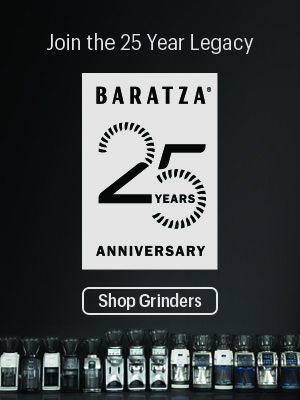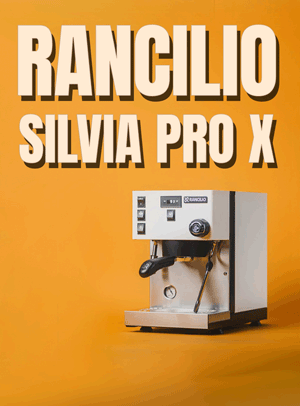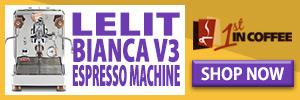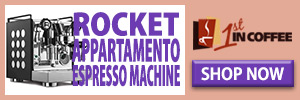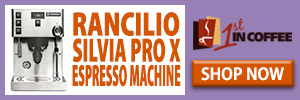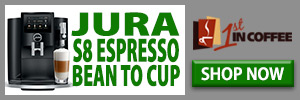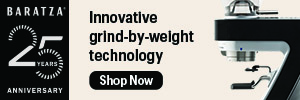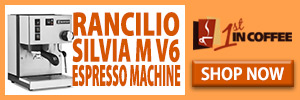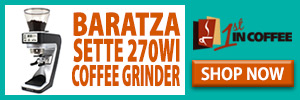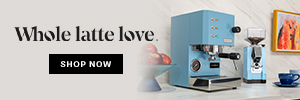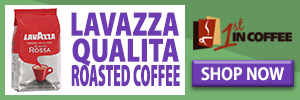The holiday season in the world of specialty coffee and espresso is a very interesting one. This is the time of the year when more people buy “big ticket” coffee and espresso items, (sometimes without even knowing how to use them) than any other time during the calendar year.
I know this because the volume email I get from consumers with new gear climbs through the roof during this period. It usually continues through mid January, and always starts around Thanksgiving.
This happens of course because of the “Black Friday” phenomenon, that uniquely American shopping holiday that has now transcended to other countries around the globe. In recent decades, this is the time of the year to find the deepest discounts on big ticket items. If you’re spending $1,500 on an espresso machine, a 20% off sale saves you $300, over any other time during the year.
Black Friday (and Cyber Monday) in particular are interesting to me. They started out some 20+ years ago as a purely American phenomenon because Americans for whatever reason celebrate their Thanksgiving on the last Thursday in November (as declared initially by President Lincoln, in 1863), but Americans treat it like a big four day holiday, not even bothering to work that Friday. Stores stayed open though, and started having big Christmas sales that day. It soon evolved into the deepest discount, biggest savings day of the year for many vendors.
Now, because people like money, the rest of the world seems to have caught Black Friday fever – including Australians, New Zealanders, the Brits, and us Canadians – even though we work a normal work week at this time because we celebrate Thanksgiving the civilised way in October: usually during the fall harvest moon time, when the crops all come in (heh). But non Americans have come to embrace the Black Friday phenomenon in late November. Vendors love it because it’s yet another time to gain a sale. Consumers love it because they can save some money on something they either need or want (usually just want).
I don’t want to get lost in the weeds here – this isn’t meant to be a criticism of Black Friday or consumerism in general – but I am intrigued in how it evolved, and why.
The shopping trend continues through all of December, as people buy gifts for their loved ones to be opened on Christmas morning. And in places like Canada, it doesn’t end on Christmas; Canada has a holiday on December 26th called Boxing Day, and a big tradition of “Boxing Day Sales” where vendors will blow out remaining stock of products on December 26. In the past, Boxing Day sales were even deeper discounts than Black Friday sales, but they’re evening out now.
Early in CoffeeGeek’s history, my email box would start flooding around mid November, asking for advice on what was the best gear to consider buying (either for the email sender themselves, or as a gift they wanted to buy) and where they could get good deals. I answered those emails a lot in 2001, 2002, but by 2003, we came up with a new plan. We’d publish a list of holiday gift suggestions. Believe it or not, there were not many “Holiday Gift List Suggestions” web posts back then, on any hobby or product category.
I’m not claiming to have invented them (we borrowed the idea from Digital Photography Review (DP Review); in fact one of many ideas we stole from them when designing and setting up CoffeeGeek), but still, I’d like to apologise for my own part in unleashing these types of lists on the general public, to the point where there’s literally hundreds of thousands of them today. But I’m getting ahead of myself.
For a time, we associated our Holiday Gift Lists with a charity called Coffee Kids (which, sadly, no longer exists). We ran online auctions, organized fundraisers, had prize giveaways and in some years, we raised as much as $28,000 for the charity. It was a ton of work (everything was done manually – we had no “automated” auction systems online at that time), but very fulfilling. Here’s an Archive-org example of the live fundraiser auctions we ran in 2004, our biggest fundraiser year.
And of course, we aided “savvy consumerism” as best we could: if people were spending $500, $1,000, $1,500 or more on espresso and coffee gear, we tried to advise them on the best deals and best, unique gift choices.
Though we no longer feature a charity in our current Holiday Gift Lists (as an aside, that kills me a bit, and I want to get back to a point where we can do this again), we still operate them with the same ethos from our past. That is, to advise our readers on the best, most unique and interesting coffee and espresso gear, and where the best prices can be found. Even if that gear and those prices could be found at vendors who didn’t advertise on, or provide any benefit to CoffeeGeek.
The same holds true for our 2023 lists.
Holiday Gift Lists Today
Today of course, the Internet is absolutely flooded with holiday gift list suggestions on every possible hobby, passion, or field of interest. And nearly 100% of them are designed primarily as income generators for the website, social media account, or the newsletter publishing them. Many are just using Amazon’s own AI tools for generating said lists.
We’ve never operated our lists that way. Sure, our lists generate some income for CoffeeGeek through one method: any product we list with an Amazon link is our affiliate link (this year, about 40% of our suggested items point to Amazon). But we also list products from our advertisers and from companies and vendors that have never advertised with us
In fact, when you see one of our advertisers listed in our HGLs, that is a “direct to product” link, not a commission generating link. I do this for one reason: as a year-end thank you to our advertisers for their ongoing support.
AI-generated content, combined with SEO trickery are making the vast majority of Gift Suggestion lists you find online less than useless: they are actually degrading the ability to find honest product recommendations online. This in turn leads to terrible and money-losing purchases by people who otherwise relied on these lists for solid advice.
As a consumer advocate, that particularly bothers me. It’s the main impetus for this article in fact. You work hard for your money, and you rely on websites like ours and others to provide honest information about good purchasing decisions on products you otherwise would know little about. I take that responsibility very seriously with CoffeeGeek, and have since 2001.
How to be a Savvy Holiday Shopper
So how do you spot the good, and weed out the bad? I can only cover gift guides squarely focusing on coffee and espresso, but here’s some tips on Holiday Gift Lists to avoid like the plague.
They Use Stock Photography Only
If a gift guide is only relying on manufacturer-supplied photography, chances are they have zero actual experience with the products, and their recommendations aren’t based on proper evaluations.
Now to be fair, we use some manufacturer-supplied photography in our guides, mainly because we’re trying to have an aesthetically even look to our graphic design. But you will find many of the products we list also have our own photography because we test or own nearly every product we recommend.
Everything is an Amazon Link
If every single recommended product is an Amazon link, chances are the article author used one of Amazon’s auto-generated holiday gift lists (yup, they provide that to affiliates) to build these lists based on typed in criteria. If you see a fancy Amazon buying box with each listing, they are definitely generated by the big monster. These lists are 100% income generators with no care about giving you actually good recommendations.
If it Seems Like AI-Generated Text, it Is
I think people today are able to recognize AI-generated “flowery descriptives” text from actual writing. If anything, AI seemed to get worse this year, than actually better. If you get a wiff of AI content, immediately close that web page.
By the way, I recognize the irony of me using an AI-generated image as the lead image for this article. I did it because of the irony of it all.
Websites / People With No Coffee Cred having Coffee Gift Lists
This should be a given. If Oprah has a “List of the Best Coffee Gifts EVER!”, guaranteed that is 1000% product placement crap that one of her staffers generated after sending feelers out to Keurig, Nespresso and Death Wish Coffee. Stay away.
Vendor Sites with Holiday Gift Lists to Their Own Products
I’m actually a bit on the fence about listing this as one to avoid. On one hand, many unscrupulous vendors are going to list the products they have surplus inventory of, and just want to get rid of. Or they’ll list the products they get the largest margins on. But I have seen a few vendors who have had really good, and out-of-the-box style Gift Lists, including some products they get made specifically for the holiday season.
Still, probably smart not to consider these types of lists as your best option for advice.
Rando-Blog with Weekly Updated Holiday Lists
Last, but certainly not least, these are SEO driven, automated websites designed to spoof search engines for higher results by frequently updating content to climb up the search results. Stay the phoque away (excuse my French).
How to Find the Good Ones
If you find a holiday gift list that is filled with personal annecdotes, review commentary on the product, and even has some mild criticism of the recommended products. chances are you’re getting some solid consumer advice.
Another tip is do some sleuthing to discover the relationship the writer of the holiday gift list has to the vendors they list for their product recommendations. Take note of who the writer points to for the products they have listed, and compare that to their websites’ list of active advertisers. Most websites will feature this information (we do, in a rotating carousel at the bottom of most content pages).
If you find some of the vendors they list are not in any way affiliated with that website (and the links aren’t going to a commission generating click link), you’ve just happened upon a good holiday gift list that wants to list really great gift suggestions, not just links that generate income.
If they only exclusively suggest products sold by their advertisers, chances are they aren’t giving you the best suggestions. The suggestions for gifts still might be really good, but their primary motivation is satisfying their advertisers, not you with good gift ideas.
Lastly, I love narratives and associated stories and histories. In other fields of interest, I have read some spectacular gift lists that come along with a tale as to why this particular product is being recommended and why it is special for the author. I haven’t seen that much in coffee and espresso lists, but one day I’ll work up the courage to do it myself for our lists. I think it’s pretty cool.
If you stumble across this kind of holiday gift least, soak it up and use it as your primary advice giver for gift ideas.



